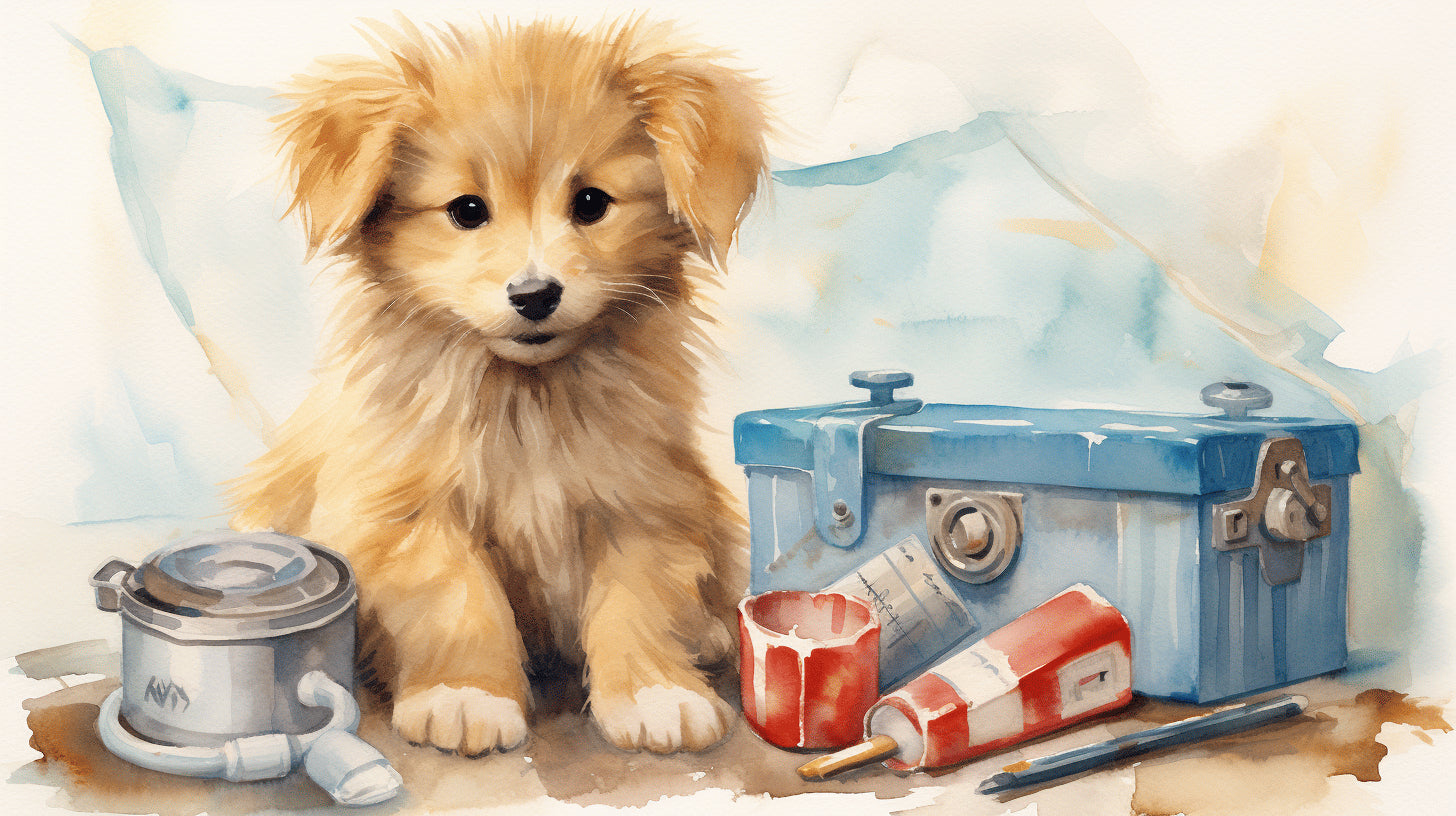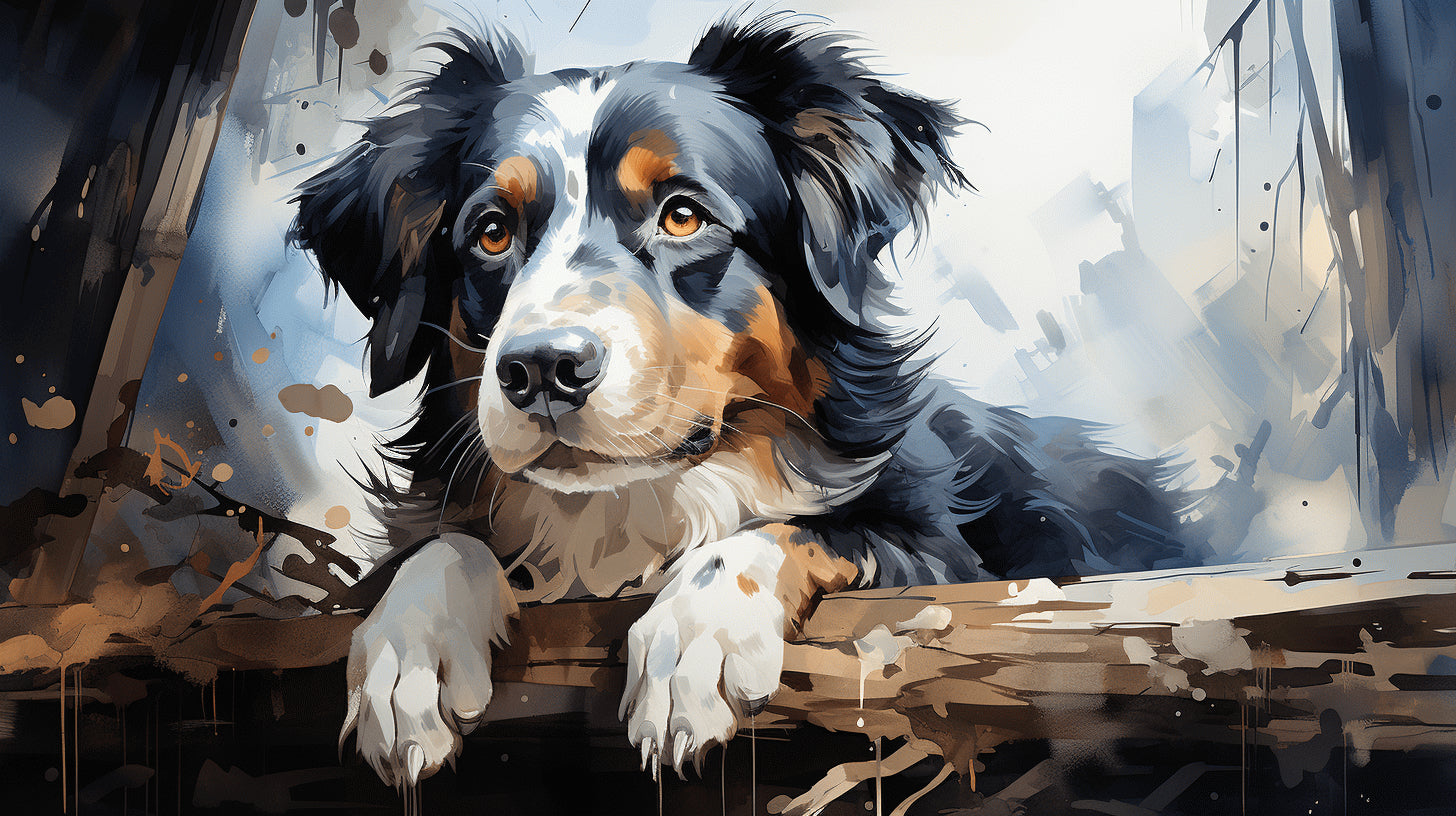Imagine a typical day in your house—morning coffee, newspaper, and the constant companionship of your furry friend that seems to make life a lot less chaotic. Pets not only bring joy into our lives but also offer us unconditional love, giving us the pawsitive boost we need every day. However, amid the hustle and bustle of our daily lives, we often overlook one crucial aspect - pet safety.
This often-neglected facet of pet ownership has far-reaching impacts on our pets' well-being. From ensuring a safe home and outdoor environment to being cognizant of the risks associated with air travel, keeping your pet safe becomes a priority for every pet parent. Understanding the importance of pet safety is the first step towards ensuring a happier and healthier life for your tails wagging buddies.
In this article, we're donning our pet-loving hats to share useful strategies for ensuring pet safety. We'll also discuss issues like animal testing, pet obesity, and the significance of pet insurance while underscoring the multiple mental health benefits of pet ownership. Let's set the ball rolling in this pet safety 101 guide. Welcome onboard!
Understanding the Importance of Pet Safety
The unconditional love and companionship that pets provide make them more than just animals; they become a cherished part of our families. Ensuring their safety is as critical as taking care of our own well-being. Unintentional harm can occur to pets through everyday activities, and understanding the importance of pet safety is the first step towards preventing such unfortunate incidents from happening.
Statistically speaking, it's surprising and somewhat alarming to note that approximately 6.3 million companion animals enter U.S. animal shelters every year. This figure underscores the magnitude of pet-related incidents and the necessity of taking preemptive measures to ensure the safety of our furry friends.
Moreover, pets themselves can unintentionally cause harm. For instance, it's grim to realize that more than 4.5 million people in the United States are bitten by dogs each year, and over 800,000 of them receive medical attention as a consequence, further illustrating the significance of pet safety education.
So, what can pet owners do to prevent these unfortunate circumstances? Increasingly, pet owners are turning to pet insurance as a proactive measure. Given that the total number of pets insured in the U.S. had risen by 22% to 4.8 million at the end of 2022, it's evident that owners are recognizing the benefit of proactively safeguarding their pets.
This sense of responsibility towards our pets is also reflected in how we've cared for those that come into shelters. In 2022, a significant 81% of the 4.4 million cats and dogs that entered U.S. shelters were saved. These saved lives highlight the crucial role that awareness, education, and action play in ensuring pet safety.
In spite of these growing initiatives, pet safety isn't just about handling emergencies as they come. It involves the diligent day-to-day care of our pets and making well-informed decisions to prevent unsavory situations from occurring. For those who want to learn actionable ways to guard their pets' safety daily, our page on Essential Tips for Pet Safety is an indispensable resource.
All things considered, understanding and prioritizing pet safety contributes to the overall well-being of our pets, leaving both pets and owners happier and healthier. Everyone stands to gain when we take pet safety seriously, and the data shows it's high time we all stepped up to do so.
Safety Measures for Home and Outdoor Environment
In today's modern world, achieving optimal safety at home and in an outdoor environment may seem complicated. This is largely due to varying safety concerns that exist, such as home burglaries or pet safety issues. The evolving threats underscore the importance to reassess and enhance personal and property safety measures regularly.
One crucial aspect of home safety involves protecting your beloved pets. Dogs, one of the most commonly owned pets, deserve special attention, especially considering that they often double as family members and security detail. Ashley's blog post on how to Protect Your Dog from Theft emphasizes key measures to prevent such unfortunate occurrences.
Important safety measures to focus on can roughly be categorized into two main headings: Home Safety and Outdoor Safety.
Home Safety
Home is supposed to echo sentiments of safety and comfort. Achieving a robust protection atmosphere involves a proactive approach. Here are some suggestions for increasing home safety:
- Home surveillance systems - Technological advancements provide an array of security systems to choose from. These can act as a deterrent and provide evidence in case of theft.
- Alarm systems - Building off the previous point, modern alarm systems notify you immediately if there's a break-in, fire, or any other immediate threat.
- Proper Lighting - Good indoor and outdoor lighting dissuades potential threats by presuming someone is at home.
Outdoor Safety
While you get to control the safety variables at home, the outdoors presents a different challenge. Take note of these steps to enhance outdoor safety:
- Awareness of Surroundings - Being alert of who or what is around you helps preempt potential threats.
- Regular Maintenance - Regular checks and repair of home exteriors, including fences and gates, lower the chances of unexpected security breaches.
- Dog Safety - Dogs are a common target for theft, especially prized breeds. Ensuring they have suitable identification and aren't left unattended significantly reduces risk.
Implementing the right measures can serve as a safeguard against unforeseen threats at home or outdoors. Be it protecting your home, yourself, or your furry friends; the key lies in being proactive and vigilant about safety measures.
Risks Associated with Air Travel for Pets
Air travel is a common mode of transportation for families or individuals who are relocating, vacationing, or need to reach their destination quickly. It brings the promise of adventure and fresh sights, but not without certain risks for our four-legged friends. As pet parents planning a trip, we should be well-informed about these risks to make the necessary arrangements and precautions when traveling. So, let's delve into some of the potential hazards that pets may face during air travel.
Starting off, understanding the environmental changes is vital. Temperature fluctuations are one of the foremost concerns during air travel. Placement in the cargo area, which is often not climate-controlled, can expose pets to extreme heat or cold. This exposure could lead to potentially fatal health issues like hyperthermia or hypothermia.
Overlooking pressure changes can be detrimental too. As the altitude changes, the pressure in the aircraft dip. While it's less of a concern at times for humans, these pressure shifts can be particularly stressful for some pets and seriously affect their overall well-being.
Finally, let's talk about the unwelcome but possible scenario of lost pets. Pets may get lost or misplaced during transit due to inefficiencies in the airline’s handling systems. To add to the stress, there are instances of pets getting injured due to unsafe crate conditions and rough handling.
In 2021 alone, airline carriers reported a total of seven animal deaths and 14 animal injuries during transportation, hinting at the severity of the risks involved.
While it's clear air travel for pets is not without its risks, certain precautions can alleviate many issues. Investing in a quality crate, selecting a reputable airline, and connecting with a trusted veterinarian before the trip can go a long way in ensuring a safer journey for our furry companions.
Let's remember, our pets trust us with their welfare, and we owe it to them to ensure their comfort and safety, even thousands of feet up in the air!
Pet Obesity and Health Concerns
Pet obesity is a growing concern that's more than just an issue of appearances. It's a serious health risk that affects an estimated 50 million dogs, as per the Association for Pet Obesity Prevention. This exponentially increases their risk for numerous illnesses that can significantly shorten their lifespan, disrupt their quality of life, and escalate animal healthcare costs.
The expanding waistlines of our furry friends may be a sign of indulgence and pampering, but it is vital to comprehend the potential downsides that tipping the scales might bring.
Some health risks associated with pet obesity include:
- Diabetes: An overweight pet has a higher likelihood of developing diabetes. Just like in humans, a high-fat diet leads to obesity and an increased risk of diabetes in pets.
- Osteoarthritis and joint issues: Carrying additional weight leads to extra strain on the joints and can lead to conditions such as osteoarthritis, causing discomfort and lack of mobility.
- Liver Disease: Obesity can lead to liver disease in animals, which can dramatically reduce their quality of life.
- Respiratory Disorders: Overweight animals may also have an increased risk of breathing problems, and it may make it harder for them to breathe during exercise or in hot weather.
- Decreased Stamina: A fitter pet can run, jump and simply play longer than a pet that is carrying around a few extra pounds.
Your pet may seem content and happy, and as a pet owner, it may be easy for you to dismiss their extra weight, but it's important to understand that obesity poses a severe threat to their health and longevity.
"Preventing pet obesity and maintaining good pet health consists of a balanced diet, regular vet visits, and an active lifestyle."
Choosing the right diet for your pet and engaging them in regular physical activity doesn't just prevent obesity; it's a recipe for a happy and healthy life. By addressing pet obesity, you're not just shedding those unnecessary pounds - you're adding years to your pet's life, enriching their days with vitality and joy.
Invest in your pet's well-being not with more kibbles but with more walks and games in the park, balanced dietary decisions, and regular vet visits. Remember, a healthy pet is a happy pet, and a happy pet makes a joyful household. As pet parents, let's promise to take immediate steps to ensure our fur-babies stay in the best shape possible!
Animal Testing Statistics
It's an unfortunate and heartbreaking reality that every year, over 110 million innocent animals find themselves at the forefront of scientific testing -- a revolting statistic that animal welfare advocates around the globe are tirelessly striving to change.
Bear in mind, we're talking about more than 110 million individual lives. It's a figure so humongous that it's almost hard to grasp, isn't it? But behind each statistic is a unique creature, with its own quirks, affections, and, yes, fears. Imagine the sheer terror of being confined and subjected to harsh procedures, not understanding why or how to escape. It's a horrifying thought, isn't it? Yet, this is the unfathomable reality for countless animals.
And it doesn't stop there. This figure of 110 million is enlightening, yet it conceals the nuances of the issue. Now, it's true that some species are used more frequently than others for research. But remember, it doesn't matter if it's a mouse, a dog, or a monkey – each creature deserves a life free from suffering.
What can we infer from all this? The heartbreaking reality is that while society progresses, an immense number of animals are still victimized in the name of 'science'. But it's also a wake-up call that things need to change. It's a call to arms for more compassionate science, for an end to unnecessary suffering, and for a new ethic where all creatures, no matter how big or small, are treated with respect and compassion.
It's high time we reevaluate and reconsider our approach to scientific testing, taking into account not only the statistical information but also the ethical implications. If we can do this, then perhaps one day, the figure of 110 million will be reduced to zero. For now, though, these animal testing statistics serve as a stark reminder of the unspoken realities we must still address.
Importance of Pet Insurance
It goes without saying that our pets very rapidly become a beloved part of the family. They shower us with unconditional love, companionship, and comfort during both exceptional and stressful times. It's only fair that we do what's best for them in return. One such way to safeguard their well-being is by ensuring they have pet insurance. But why is pet insurance so important? Let's take a closer look.
Like any other form of insurance, pet insurance is there to help when unexpected events take place. Accidents, illnesses, or sudden emergencies - these are instances where having insurance for your fluffy companion can play a crucial role. Pet insurance can save you from the torment of making difficult decisions based on financial limitations rather than your pet's health and comfort. An operation or treatment can go from unaffordable to affordable with insurance, making it indispensable in maintaining the quality of your pet's life.
The facts and trends back this up. According to some recent data, "In 2020, roughly 3.45 million pets were covered by a pet insurance policy in North America." The increasing propensity of pet owners to cover their pets' health underlines the growing recognition of pet insurance's significance.
Here are some core reasons so many are opting for pet insurance:
- Budgeting: Pet insurance allows you to budget monthly rather than face an unexpected large bill. You can plan your finances knowing your pet's health costs are covered.
- Choice of Treatment: Insurance enables you to afford the best possible care and treatment options for your pet, meaning their life doesn't have to be compromised because of high medical costs.
- Peace of Mind: Knowing your pet's healthcare is looked after gives you the ultimate peace of mind.
The importance of pet insurance goes beyond mere numbers. It reflects our commitment to our pets and their well-being. As responsible pet owners, it's imperative we do whatever is in our power to ensure they get the care and treatment they deserve when they need it. After all, wouldn't they do the same for us?
While pet insurance may seem like a luxury, it can quickly transform into a necessity in bewildering circumstances. A growing number of pet parents realize this, and it's perhaps time you give this essential aspect a thought.
"To insure or not to insure?" - when it comes to your much-loved pets, the response should undoubtedly be affirmative. While the decision ultimately rests with you, the smart, responsible, and kind-hearted pet owner would agree that the importance of pet insurance is nothing short of undeniable.
Thus, rather than merely viewing pet insurance as an added expense, it's more accurate and helpful to regard it as an investment into your pet's healthful well-being. With that perspective, you'll feel reassured that you're making a wise, caring, and judicious choice. The knowledge that you've provided for your pet's future should make both you and them sleep a little easier at night. After all, that's what being a responsible pet parent is all about, isn't it?
Mental Health Benefits of Pet Ownership
In the bustling rhythm of today's world, finding effective and sustainable means to maintain good mental health can be a challenge. Interestingly, a solution might be as simple as adopting a furry, feathery, or scaly friend. Indeed, pet ownership has proven to offer a myriad of mental health benefits to individuals around the globe.
To delve a bit deeper, there's a substantial body of research that showcases just how beneficial pets can be for our mental wellbeing. Astonishingly, a staggering 74% of pet owners have reported mental health improvements from pet ownership. This remarkable insight underscores the dynamic role pets play in creating a healthier, happier living environment.
Now, you might be pondering what specific aspects of mental health pet ownership positively influences? The list is quite extensive, but let's break down some of the key benefits:
- Combatting Loneliness: Pets provide constant companionship, alleviating feelings of solitude and isolation. With a pet by your side, you're never really alone.
- Stress Relief: Studies have shown that petting an animal can lower blood pressure and reduce cortisol (a stress-related hormone) levels, providing immediate stress relief.
- Boosting Self-esteem: Taking care of a pet encourages responsibility, creates a routine and can majorly boost one's self-esteem.
- Promoting Physical Activity: Regular walks or playing with pets boost one's physical health, which in turn has a positive impact on mental wellbeing.
From welcoming you home enthusiastically after a long day at work to providing non-judgemental companionship—the mental health benefits of pet ownership are truly vast and powerful.
In asserting the transformative power of pet ownership on mental health, it's worth noting that all pets may not be suitable for everyone. The key lies in finding a pet whose needs align with your lifestyle, thus enabling a mutually enriching relationship.
While pets cannot replace professional mental health treatments, they can certainly be a wonderful source of emotional support and comfort. Curating a life filled with sources of joy, companionship, and purpose can ultimately lead to better mental health—and pets undeniably play a pivotal role in that journey.
Conclusion
Caring for our pets encompasses so much more than the basics of food, water, and shelter. It involves adopting the most effective safety measures at home and during outdoor activities, understanding the potential risks of air travel, and ensuring our pets maintain optimal health and weight. Furthermore, considering pet insurance can bring endless peace of mind, while recognizing the significant impact of pets on our own mental health is essential. At the forefront of prioritizing your pet's safety and wellbeing stands Empowered by Ashley, committed to making life better for both owners and their furry companions. Their heartfelt ethos and diverse range of products ensure that pet safety is never compromised, and that every pet is, undoubtedly, a well-loved pet.
Frequently Asked Questions
-
What are some essential pet safety tips?
Some essential pet safety tips include keeping your pets' vaccinations up to date, providing a safe and secure environment, keeping toxic substances out of their reach, using appropriate restraints during car travel, and providing regular exercise and mental stimulation.
-
Are there any specific foods that are harmful to pets?
Yes, there are several foods that can be harmful to pets, including chocolate, grapes and raisins, onions and garlic, alcohol, and caffeine. It's important to keep these foods out of your pet's reach to avoid potential health issues.
-
How can I ensure the safety of my pets during hot weather?
To ensure the safety of your pets during hot weather, provide access to fresh water at all times, provide shade and a cool environment, avoid walking them on hot pavement, and never leave them in a parked car, as it can quickly become dangerously hot.
-
What should I do if my pet ingests something toxic?
If your pet ingests something toxic, contact your veterinarian immediately. It's important to have the necessary information about the substance your pet consumed, such as the amount and time of ingestion, to ensure prompt and appropriate treatment.
-
How can I pet-proof my home to ensure my pet's safety?
To pet-proof your home, remove any potential hazards such as toxic plants, electrical cords, and small objects that can be swallowed. Keep cleaning supplies and medications stored securely, and use baby gates or other barriers to restrict access to certain areas if needed.




















Leave a comment
This site is protected by hCaptcha and the hCaptcha Privacy Policy and Terms of Service apply.